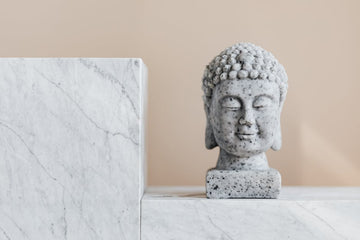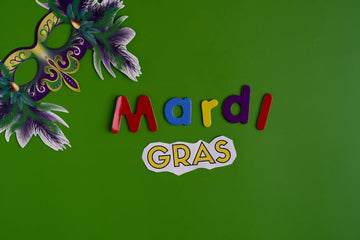
The role of mythology in multicultural art
Mythology plays a significant role in multicultural art as it often serves as a source of inspiration for artists worldwide. Mythological stories and characters from various cultures are frequently portrayed in artworks, reflecting the rich tapestry of beliefs and traditions. Artists use mythology to convey cultural values, religion, and historical events, creating a connection between the past and the present. Through the depiction of mythology in art, viewers can gain insight into different cultures and expand their understanding of the world.
Origins of mythology as inspiration
Mythology has been a source of inspiration for artists across different cultures for centuries. Mythological stories, filled with gods, heroes, and magical creatures, are rich in symbolism and meaning, making them a fertile ground for artistic exploration. Artists draw upon these ancient tales to create artworks that delve into themes of heroism, good vs. evil, fate, and mystery. By reimagining mythological characters and events, artists give new life to these age-old tales and connect them to contemporary audiences.
Myths and legends incorporated in art
Myths and legends have long been intertwined with art across cultures. They serve as a rich source of inspiration for many artists, allowing them to create pieces that reflect ancient stories and beliefs. When myths and legends are incorporated into art, they add layers of meaning and symbolism, inviting viewers to delve deeper into the narratives behind the artworks. Artists often use mythological figures and tales to convey universal themes and emotions, making the art more relatable and thought-provoking for audiences. Whether through paintings, sculptures, or other forms of artistic expression, myths and legends continue to play a significant role in shaping multicultural art, connecting generations and fostering a sense of shared cultural heritage.
Symbolism in multicultural art
Symbolism in multicultural art plays a significant role in conveying messages, emotions, and cultural values. Artists often use symbols to represent ideas or beliefs that might not be easily expressed through words. In multicultural art, symbolism can vary widely, with each symbol carrying its own unique meaning. Some common symbols found in multicultural art include:
- Lotus flower: Symbolizes purity and enlightenment
- Dragon: Represents strength and good luck in many Asian cultures
- Dreamcatcher: Reflects protection and the filtering of negative energies
- Ankh: Symbol of life and immortality in Ancient Egyptian art
Understanding the symbolism in multicultural art can enhance your appreciation of the artwork and provide insight into the cultural significance behind it.
Cultural diversity in artistic expressions
Artistic expressions are greatly enriched by cultural diversity. Different cultures bring unique stories, symbols, and traditions to artworks, creating a rich tapestry of creativity. Artists draw inspiration from their cultural backgrounds, infusing their creations with a blend of heritage and modern influences. This fusion gives rise to a dynamic and diverse range of artistic expressions that reflect the beauty and complexity of our multicultural world.
Artists inspired by mythology across cultures
Artists draw inspiration from myths and legends found in different cultures, creating artworks that reflect these timeless tales. Here are some key points about artists who find inspiration in mythology:
- Mythology serves as a wellspring of creativity for artists worldwide.
- Artists blend elements from various mythologies to create unique and culturally rich artworks.
- These diverse artworks showcase the universal themes and symbols found in myths from different cultures.
Mythological themes in contemporary art
Mythological themes have been a prevalent source of inspiration in contemporary art. Artists often draw from ancient myths and legends to create meaningful and impactful pieces. Incorporating mythology into art allows for the exploration of timeless stories and symbols, providing a rich tapestry of cultural narratives. This fusion of ancient tales with modern artistic expression creates a bridge between the past and the present, offering viewers a deeper insight into different cultures and their beliefs.
Techniques and mediums used in mythological art
Mythological art uses various techniques and mediums to bring stories to life. Artists often employ painting, sculpture, drawing, and digital art to depict mythological figures and tales. Mixing of colors, intricate detailing, and symbolic representations are common in mythological artworks. Sculptors may utilize clay, stone, or metal to create three-dimensional mythological sculptures. Digital artists bring myths into modern times using software like Photoshop or Illustrator. Each medium offers a unique way to interpret and showcase myths across different cultures.
Impact of mythological narratives on artistic interpretations
Mythological stories from various cultures have long inspired artists to create unique and captivating pieces of art. These narratives provide a rich tapestry of symbols, themes, and characters that artists draw upon to convey deeper meanings in their creations. Exploring different mythologies can offer audiences a glimpse into diverse cultural perspectives and beliefs, enriching their understanding of art across various societies.
Conclusion: Mythology’s enduring influence on multicultural art
Mythology continues to be a powerful source of inspiration for artists around the world, transcending cultural boundaries and time periods. Through the fusion of mythological themes with diverse artistic styles, various cultures have created a rich tapestry of artwork that reflects shared human experiences and beliefs. From Greek mythology influencing Renaissance art to Hindu mythology inspiring contemporary artists, the impact of myths on multicultural art remains pervasive and timeless. By weaving ancient stories and symbols into modern artistic expressions, creators reinforce the relevance and universality of mythology in shaping our collective visual landscape.



